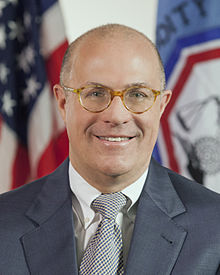Today my colleague Eli Dourado and I have filed a public interest comment with the New York Department of Financial Services on their proposed “BitLicense” regulatory framework for digital currencies. You can read it here. As we say in the comment, NYDFS is on the right track, but ultimately misses the mark:
State financial regulators around the country have been working to apply their existing money transmission licensing statutes and regulations to new virtual currency businesses. In many cases, existing rules do not take into account the unique properties of recent innovations like cryptocurrencies. With this in mind, the department sought to develop rules that were “tailored specifically to the unique characteristics of virtual currencies.”
As Superintendent Benjamin Lawsky has stated, the aim of this project is “to strike an appropriate balance that helps protect consumers and root out illegal activity—without stifling beneficial innovation.” This is the right goal and one we applaud. It is a very difficult balance to strike, however, and we believe that the BitLicense regulatory framework as presently proposed misses the mark, for two main reasons.
First, while doing much to take into account the unique properties of virtual currencies and virtual currency businesses, the proposal nevertheless fails to accommodate some of the most important attributes of software-based innovation. To the extent that one of its chief goals is to preserve and encourage innovation, the BitLicense proposal should be modified with these considerations in mind—and this can be done without sacrificing the protections that the rules will afford consumers. Taking into account the “unique characteristics” of virtual cur-rencies is the key consideration that will foster innovation, and it is the reason why the department is creating a new BitLicense. The department should, therefore, make sure that it is indeed taking these features into account.
Second, the purpose of a BitLicense should be to take the place of a money transmission license for virtual currency businesses. That is to say, but for the creation of a new BitLicense, virtual currency businesses would be subject to money transmission licensing. Therefore, to the extent that the goal behind the new BitLicense is to protect consumers while fostering innovation, the obligations faced by BitLicensees should not be any more burdensome than those faced by traditional money transmitters. Otherwise, the new regulatory framework will have the opposite effect of the one intended. If it is more costly and difficult to acquire a BitLicense than a money transmission license, we should expect less innovation. Additional regulatory burdens would put BitLicensees at a relative disadvantage, and in several instances the proposed regulatory framework is more onerous than traditional money transmitter licensing.
As Superintendent Lawsky has rightly stated, New York should avoid virtual currency rules that are “so burdensome or unwieldy that the technology can’t develop.” The proposed BitLicense framework, while close, does not strike the right balance between consumer protection and innovation. For example, its approach to consumer protection through disclosures rather than prescriptive precautionary regulation is the right approach for giving entrepreneurs flexibility to innovate while ensuring that consumers have the information they need to make informed choices. Yet there is much that can be improved in the framework to reach the goal of balancing innovation and protection. Below we outline where the framework is missing the mark and recommend some modifications that will take into account the unique properties of virtual currencies and virtual currency businesses.
We hope this comment will be helpful to the department as it further develops its proposed framework, and we hope that it will publish a revised draft of the framework and solicit a second round of comments so that we can make sure we all get it right. And it’s important that we get it right.
Other jurisdictions, such as London, are looking to become the “global centre of financial innovation,” as Chancellor George Osborne put it in a recent speech about Bitcoin. If New York drops the ball, London may just pick it up. As Garrick Hileman, economic historian at the London School of Economics, told CNet last week:
The chancellor is no doubt aware that very little of the $250 million of venture capital which has been invested in Bitcoin startups to date has gone to British-based companies. Many people believe Bitcoin will be as big as the Internet. Today’s announcement from the chancellor has the potential to be a big win for the UK economy. The bottom line on today’s announcement is that Osborne thinks he’s spotted an opportunity for the City and Silicon Roundabout to siphon investment and jobs away from the US and other markets which are taking a more aggressive Bitcoin regulatory posture.
Let’s get it right.
 U.S. Commodity Futures Trading Commission (CFTC) Commissioner J. Christopher Giancarlo delivered an amazing address this week before the Depository Trust & Clearing Corporation 2016 Blockchain Symposium. The title of his speech was “Regulators and the Blockchain: First, Do No Harm,” and it will go down as the definitive early statement about how policymakers can apply a principled, innovation-enhancing policy paradigm to distributed ledger technology (DLT) or “blockchain” applications.
U.S. Commodity Futures Trading Commission (CFTC) Commissioner J. Christopher Giancarlo delivered an amazing address this week before the Depository Trust & Clearing Corporation 2016 Blockchain Symposium. The title of his speech was “Regulators and the Blockchain: First, Do No Harm,” and it will go down as the definitive early statement about how policymakers can apply a principled, innovation-enhancing policy paradigm to distributed ledger technology (DLT) or “blockchain” applications.

 I’m thrilled to make available today a discussion draft of a new paper I’ve written with
I’m thrilled to make available today a discussion draft of a new paper I’ve written with  The Technology Liberation Front is the tech policy blog dedicated to keeping politicians' hands off the 'net and everything else related to technology.
The Technology Liberation Front is the tech policy blog dedicated to keeping politicians' hands off the 'net and everything else related to technology.